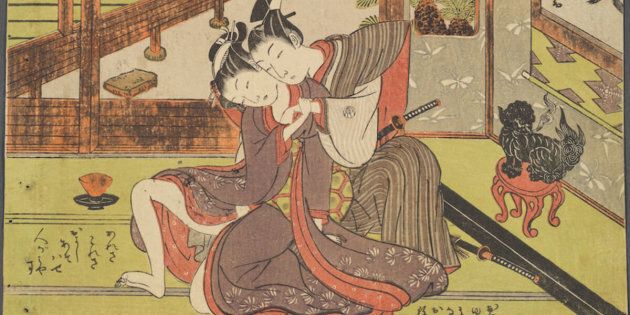

Generation Z refers to individuals born during the mid-1990s and early ‘00s often billed as the generation most likely to fully embrace gender fluidity. According to one report, around 56 percent of teens ages 13 to 20 know of someone who identifies themselves using gender-neutral pronouns like “they” or “ze.” Regarding sexual orientation, the study found that approximately one-third of the demographic has chosen to identify as neither heterosexual or homosexual, indicating that they are bisexual “to some degree.”
When it comes to matters of gender and sexuality, however, the prerogatives of this up-and-coming age group are not necessarily unprecedented. In fact, many living during Japan’s Edo period, which stretched from the early 1600s to about 1868, recognized a third gender centuries ago. That gender was known as “wakashu,” or “beautiful youths.”
The cultural subgroup typically consisted of adolescent boys who had not yet entered into adulthood, and in the interim, were seen as androgynous, culturally permitted to present as both male and female and as the objects of desire for both men and women. That is, until they removed their forelocks in a coming-of-age ceremony known as “genpuku.”
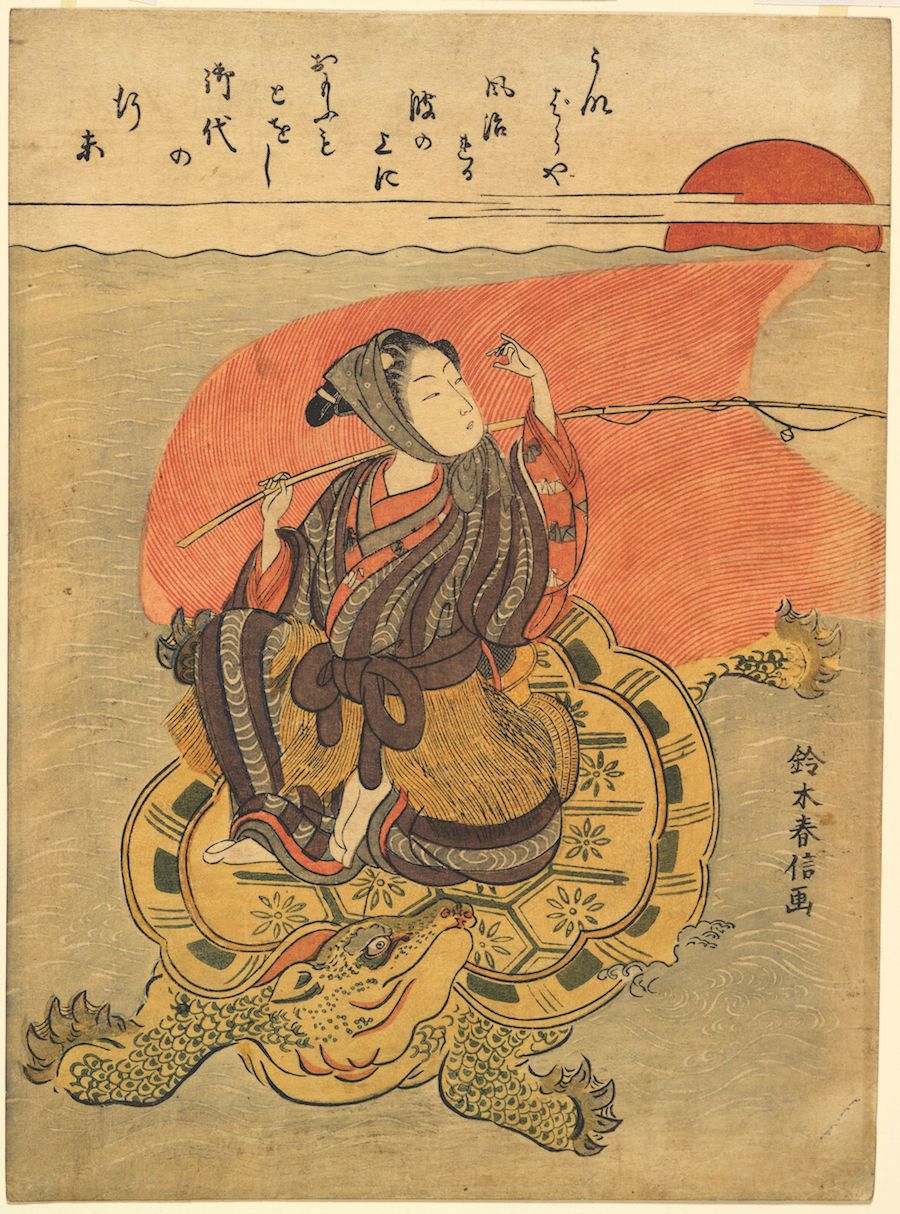
An exhibition dedicated to the portrayal of wakashu in Japanese art is now on view for the first time in North America. Titled “A Third Gender: Beautiful Youths in Japanese Prints,” the show features erotic prints from the 17th to 19th centuries in which gender and sexuality are depicted as playful and flexible.
The works depict a radical moment in Japanese history that often goes unacknowledged even today. As Asato Ikeda, a guest curator of the exhibition, told The New York Times: “Even though we have this rich tradition of gender, prints like these are not found in our textbooks. We don’t do these kinds of exhibitions in Japan.”
The Edo period was characterized by peace, economic growth, isolation from the West and a rigid social order. Within this era of tranquility and prosperity blossomed a renewed interest in art, entertainment and sex, all of which converged in cultural practices like Kabuki theater, red light–style pleasure districts and erotic prints known as “shunga.”
Given the strict hierarchies that divided class and age in real life, these realms opened up space for fantasies to play out and experimentation to flourish. The wild imaginings and the power plays they alluded to are visualized in the vivid woodblock prints that circulated for cheap throughout the two Edo centuries. Within them, older men and women make love to wakashu, pictured as flirtatious and desirable.
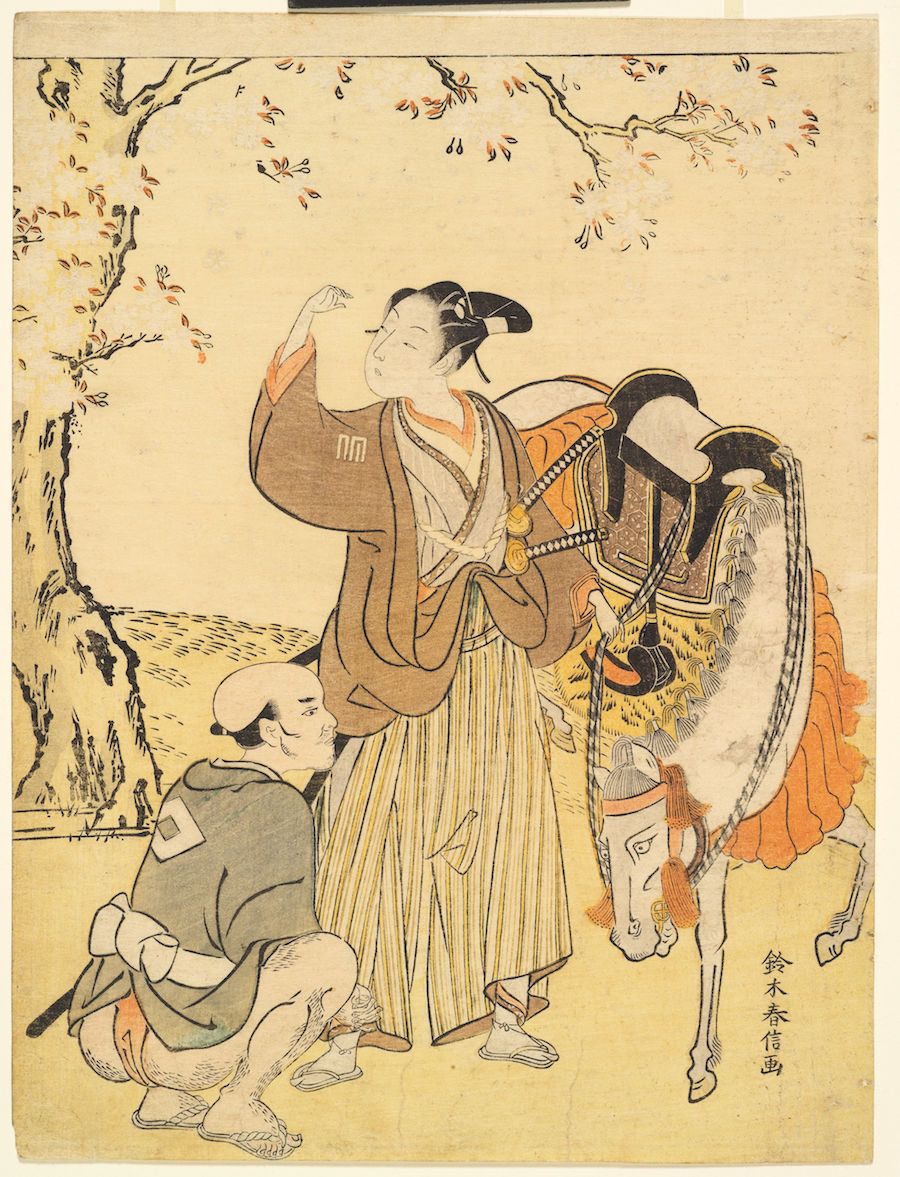
Upon first glance, wakashu appear like women, donning elaborate hairstyles and long-sleeved kimono robes, known as “furisodes.” Yet a shaved triangular patch toward the top of the head is the defining mark that identifies the alluring youth as wakashu. A sword peeking out of a samurai sash can also disclose their biological sex, as can their genitals, which occasionally appear in some of the more erotic prints.
The images also depict cross-dressing in various forms ― women sex workers known as “haori-geisha” who dressed as wakashu to appeal to male clients aroused by masculinity, enacting a sort of drag within drag. Men also performed female roles on the Kabuki stage, where women were banned, as fluctuating actors known as “onnagata.”
The tradition of the wakashu died out around 1860, when Japan was infiltrated both militarily and culturally by the West and, as a result, broke with their more experimental traditions. Today, same-sex marriage is still not legal in Japan, although some cities do grant partnerships between LGBTQ people. Open attitudes regarding gender identity and sexual experimentation, however, are most evident in the stunning imagery crafted centuries ago, when gender was not conceived of as either binary or biological, but a fluctuating range of identities and performances, of pleasure and play.
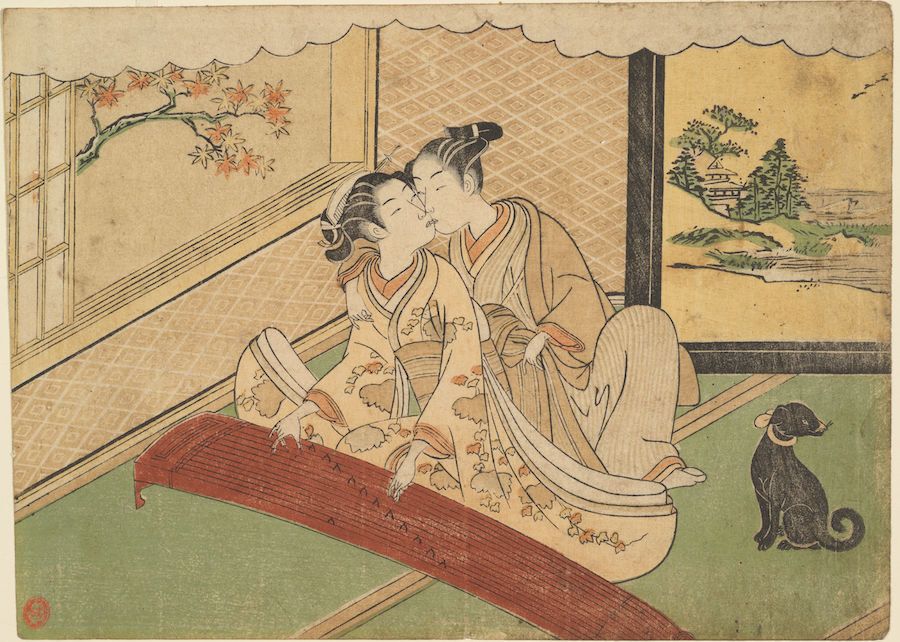
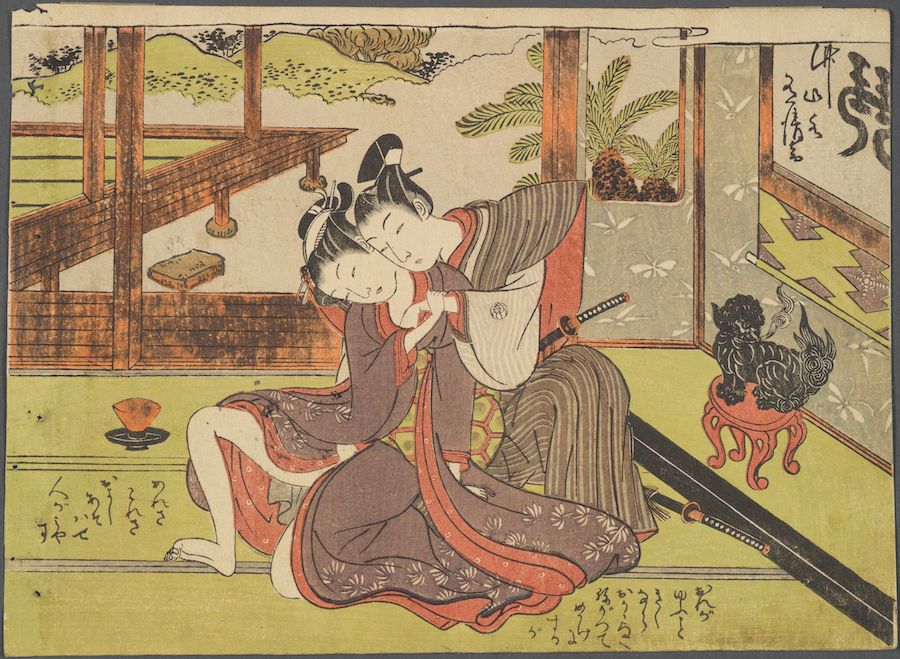
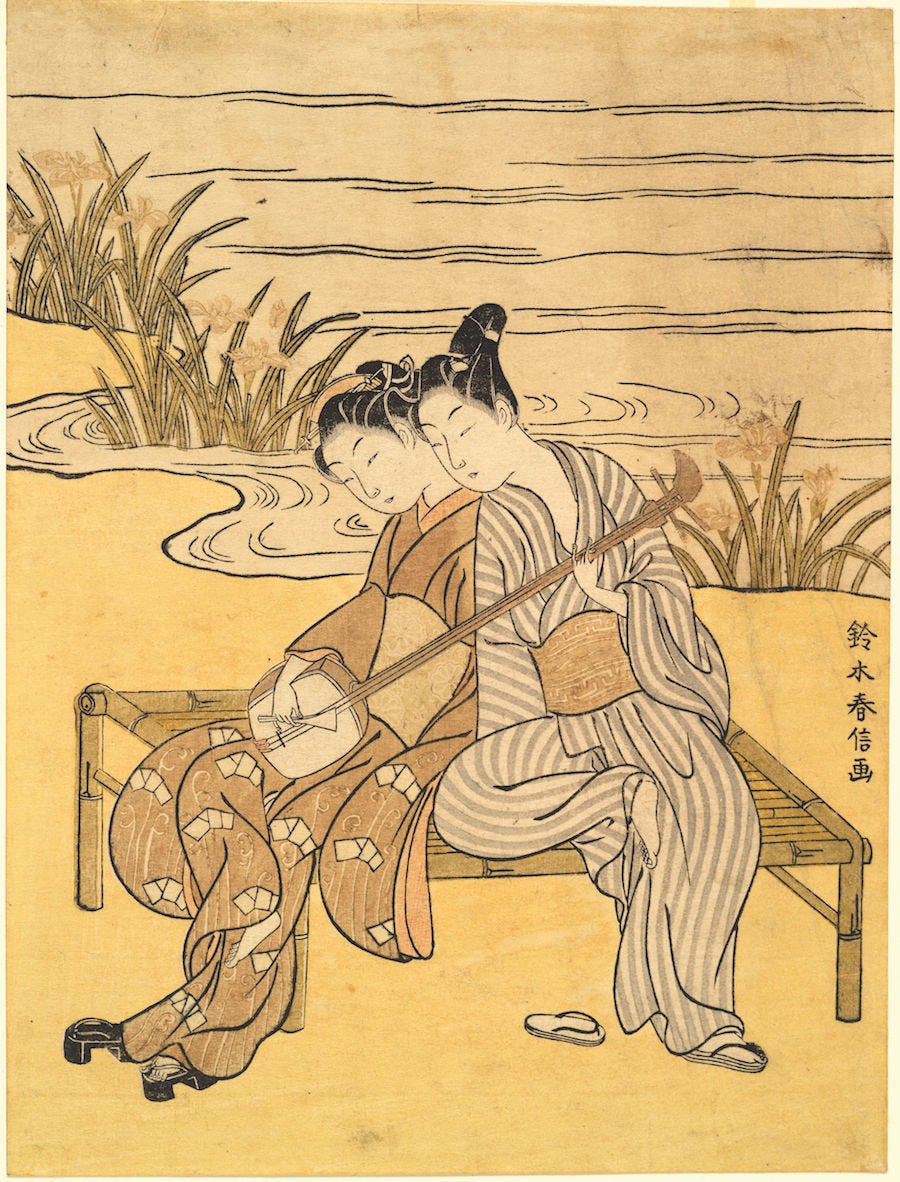
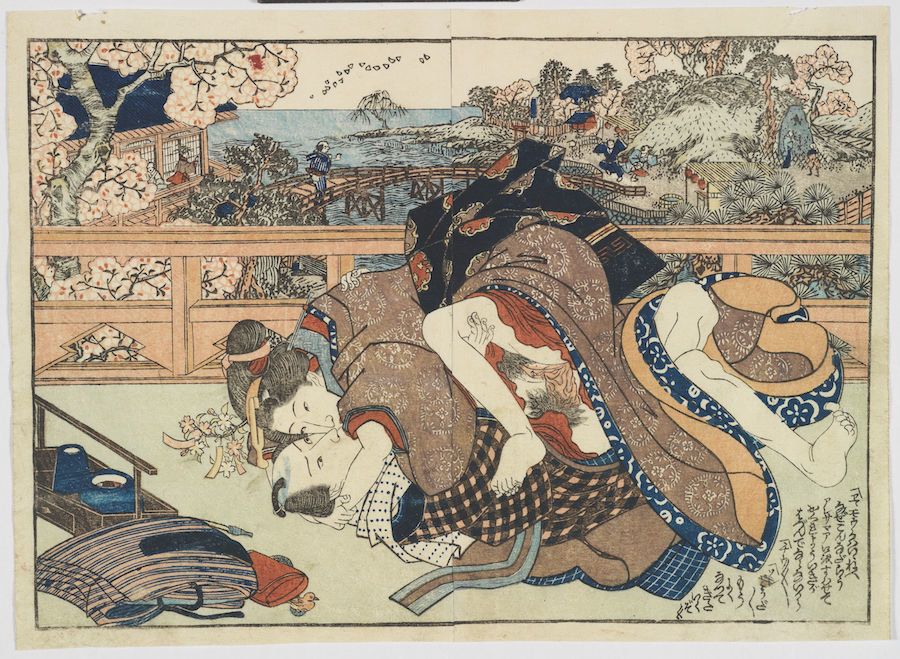
“A Third Gender: Beautiful Youths in Japanese Prints” is on view through June 11 at New York’s Japan Society.